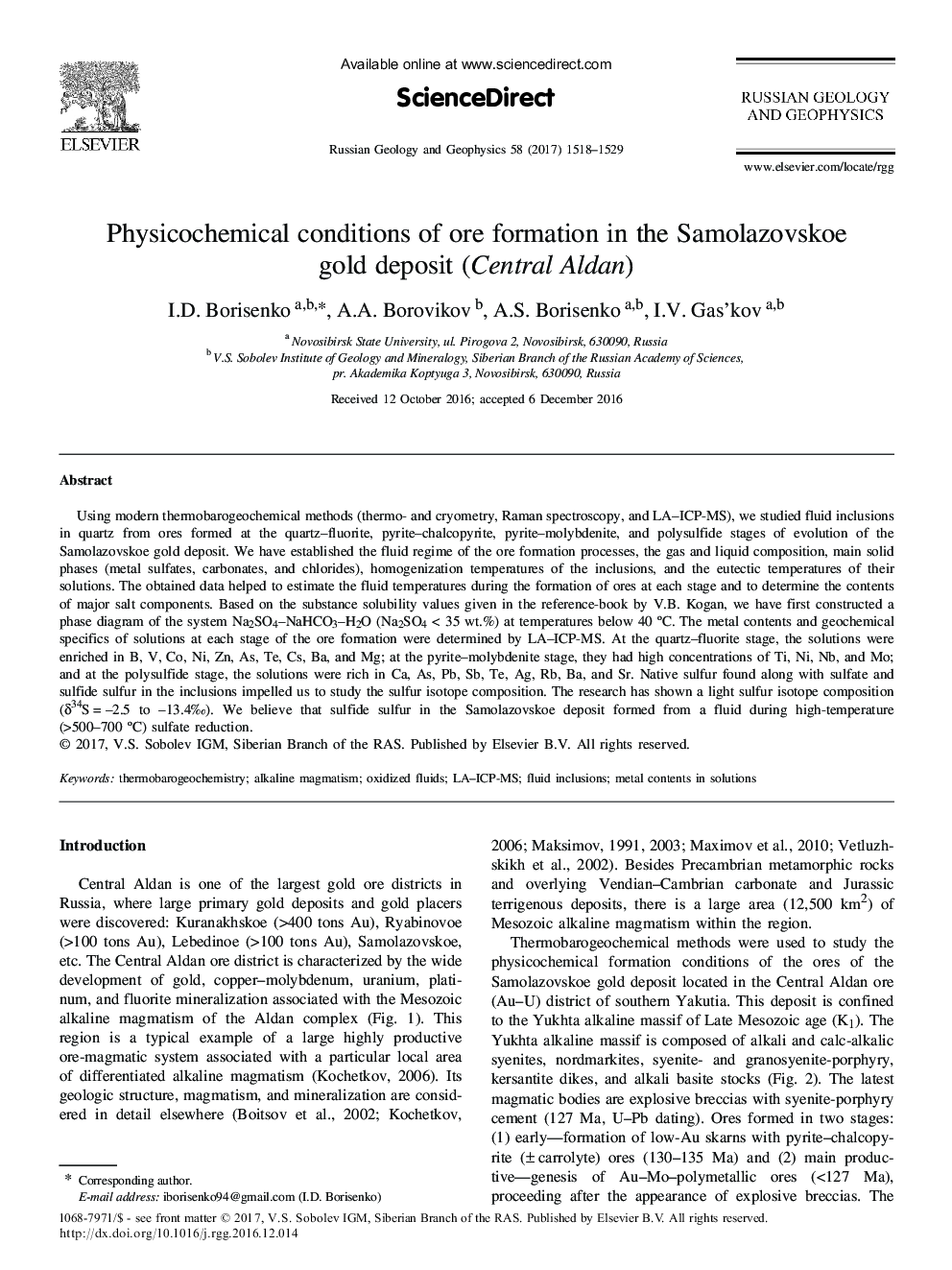| Article ID | Journal | Published Year | Pages | File Type |
|---|---|---|---|---|
| 8915239 | Russian Geology and Geophysics | 2017 | 12 Pages |
Abstract
Using modern thermobarogeochemical methods (thermo- and cryometry, Raman spectroscopy, and LA-ICP-MS), we studied fluid inclusions in quartz from ores formed at the quartz-fluorite, pyrite-chalcopyrite, pyrite-molybdenite, and polysulfide stages of evolution of the Samolazovskoe gold deposit. We have established the fluid regime of the ore formation processes, the gas and liquid composition, main solid phases (metal sulfates, carbonates, and chlorides), homogenization temperatures of the inclusions, and the eutectic temperatures of their solutions. The obtained data helped to estimate the fluid temperatures during the formation of ores at each stage and to determine the contents of major salt components. Based on the substance solubility values given in the reference-book by V.B. Kogan, we have first constructed a phase diagram of the system Na2SO4-NaHCO3-H2O (Na2SO4 < 35 wt.%) at temperatures below 40 °C. The metal contents and geochemical specifics of solutions at each stage of the ore formation were determined by LA-ICP-MS. At the quartz-fluorite stage, the solutions were enriched in B, V, Co, Ni, Zn, As, Te, Cs, Ba, and Mg; at the pyrite-molybdenite stage, they had high concentrations of Ti, Ni, Nb, and Mo; and at the polysulfide stage, the solutions were rich in Ca, As, Pb, Sb, Te, Ag, Rb, Ba, and Sr. Native sulfur found along with sulfate and sulfide sulfur in the inclusions impelled us to study the sulfur isotope composition. The research has shown a light sulfur isotope composition (534S = -2.5 to -13.4%c). We believe that sulfide sulfur in the Samolazovskoe deposit formed from a fluid during high-temperature (> 500-700 °C) sulfate reduction.
Related Topics
Physical Sciences and Engineering
Earth and Planetary Sciences
Geology
Authors
I.D. Borisenko, A.A. Borovikov, A.S. Borisenko, I.V. Gas'kov,
